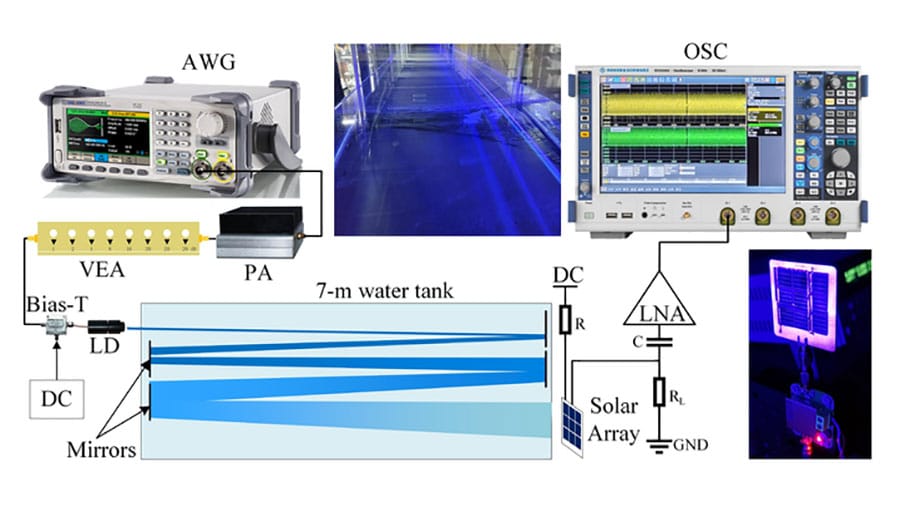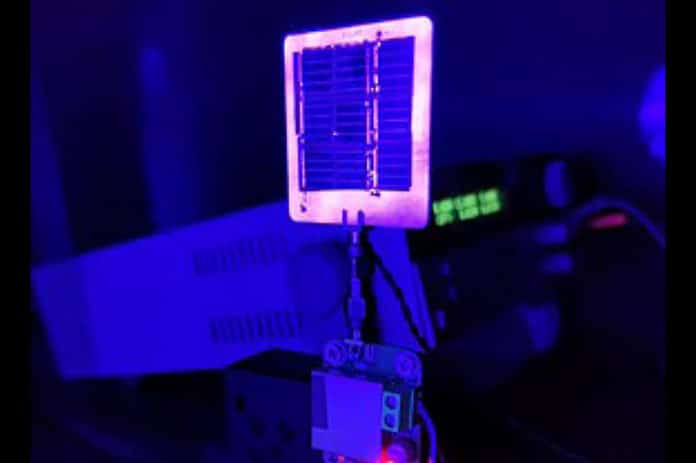Solar panels are being increasingly used as detectors in underwater wireless optical communication (UWOC) systems, as the large detection area can significantly simplify the link alignment. However, the greatest problem in such a scheme is the limited bandwidth of the solar panel, which was originally optimized for energy harvesting rather than communication.
Now, researchers from China’s Zhejiang University have shown that solar cells can be used to achieve underwater wireless optical communication with high data rates. The new approach – which used series-connected solar arrays for high-speed underwater detection – could offer a cost-effective, low-energy way to transmit data underwater.
The team used an array of commercially available solar cells to create an optimized lens-free system for high-speed optical detection underwater. Solar cells offer a much larger detection area than the photodiodes traditionally used as detectors in wireless optical communication.
“Until now, achieving high-speed links using off-the-shelf silicon solar cells has required complex modulation schemes and algorithms, which need intense computing resources that use extra power and create a high processing latency,” said research team leader Jing Xu from Zhejiang University in China. “Using modeling and simulation of connected solar cells, we optimized the peripheral circuit, which significantly improved the performance of our solar cell-based detector.”

The researchers tested a new design, which used a 3×3 array of linked solar cells to create a detection area of 3.4 × 3.4 cm in a 7-meter-long water tank that emulated an underwater channel. A series of mirrors was used to extend the path length of the optical signal, creating a transmission distance of 35 meters. During the tests, the system showed stability, low power consumption, and high performance. As the size of the solar arrays increases from 1×1 to 3×3, the −20-dB bandwidth increases from 4.4 MHz to 24.2 MHz.
Applying a reverse bias voltage of 90 V boosted the bandwidth further, allowing them to achieve a −20-dB bandwidth of 63.4 MHz, which enabled a 35-m/150-Mbps underwater wireless optical link.
Xu and colleagues plan to next study its performance with weak optical signals to optimize the system for real-world applications in underwater communication. This will show how well it works in muddy water and with movement.
